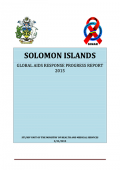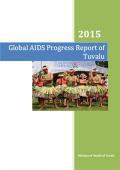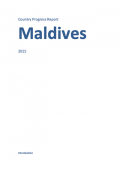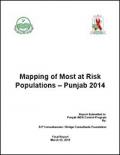What's New
Displaying results 3041 - 3050 of 4914

Resource | Publications,
In this reporting round to Global AIDS Response Progress Reporting, Samoa’s country report covers the period of January-December 2014. This is the 4th time Samoa has submitted an overarching report and to this global mechanism, so as to show support towards our Global fight to ending further transmission of HIV and AIDS globally, thus saving more lives.
This country report was prepared in an effective consultative manner. A consultation was held with our Sexual Reproductive Health stakeholders that encompass both HIV/AIDS and SRH representatives. Given that there was very limited data that could respond to all different sets of indicators given, the focus of this report is directed in its narrative section which provides a complete outlook of Samoa’s response to HIV/AIDS nationally.

Resource | Publications,
This report on the progress made in the Solomon Islands AIDS response between January and December 2014 was developed through a consultative process involving all the major stakeholders involved in the response. The report highlights the achievements, challenges and lessons learnt in the Solomon Islands AIDS response in the thematic areas of Prevention, Treatment, Care and Support as well as Health Systems Strengthening; in line with the UNAIDS Guidelines for Global AIDS Response Progress Reporting 2015

Resource | Publications,
This report is follow-on from the 2013 GAPR Report which covers progress made by the Tonga national HIV/AIDS response during 2014 against the global targets and eliminations commitment to the 2011 Political Declaration on HIV/AIDS. The report has been formulated through a multi-participatory process involving key Stakeholders who are proactive in various areas of care for PLWHIV in Tonga. Inclusion of Government and Non-Government Organization assisting the GAPR Focal Point in collating information to document this report.

Resource | Publications,
This report was prepared by the Minister of Health of Tuvalu on March 31, 2015 with technical support from UNAIDS Office in the Pacific.
This report was coordinated by the Tuvalu Department of Public Health which is leading the HIV/AIDS programme response in Tuvalu. The data and analyses presented in this report was drawn from a diverse range of sources including (but not limited to): Department of Public Health and the Tuvalu Princess Margaret Hospital, Laboratory and STI Clinic administrative and reporting data; Tuvalu’s Demographic Health Survey 2007 and key informant interviews.

Resource | Publications,
The AIDS Surveillance Committee holds quarterly meetings to compile the annual report on the trends of new reported cases of HIV infection and AIDS in Japan based on anonymous reports from all prefectures. Physicians who diagnosed HIV infection (without AIDS symptoms) or AIDS are obliged to submit a case report to the prefectural government. The case report includes the result of HIV testing, major symptoms and diagnosis, gender, age, nationality, residential area, possible transmission route including place and the date of diagnosis.

Resource | Publications,
The government continues to take HIV/AIDS as a serious public health concern in the country and directs efforts to reduce risk behaviors and prevention of HIV spread in the country, as evidenced by the review of the National strategic plan 2007-2011. Guided by the National AIDS Council, the HIV program will adopt a multi sector approach with UN agencies, NGOs and government bodies as skate holders. And the National AIDS Control Program, Centre for Community Health and Disease Control, will be the main coordinating body responsible for all related nation-wide activities.

Resource | Publications,
Mongolia is reporting 21 of 31 core indicators of the Global AIDS Response Progress (GARP), and all reported data are new compared to the previously reported ones. The indicator was updated with the findings of the eighth round of HIV/STI Surveillance Survey (SS) conducted in 2014, and the Social Indicators Sampling Survey-2013 (SISS) finalized in 2015.
In addition to the core indicators, Mongolia is reporting 33 of 39 indicators of the health sector responses towards universal access (UA) to HIV prevention, treatment, care and support, and all reported data are new compared to the previously reported ones.

Resource | Publications,
Like other Asian countries, Pakistan is following a comparable HIV epidemic trend having moved from ‘low prevalence, high risk’ to ‘concentrated’ epidemic in the early to mid-2000s. Pakistan’s epidemic is primarily concentrated among two of the key population groups driving the epidemic in the country. These are People Who Inject Drugs (PWID) with a national prevalence of 27.2% (weighted prevalence of 37.8%); followed by Hira (Transgender) Sex Worker (HSW) standing at 5.2% and then 1.6% among Male Sex Worker (MSW). Fortunately the prevalence in Female Sex Workers still remains low at 0.6%.

Resource | Presentations,
This presentation outlines the situation and direction in HIV Response of the government of Cambodia.

Resource | Publications,
The key objective of this mapping study was to provide the province with accurate and reliable information on the size and characteristics of most at risk populations in selected cities of Punjab, through a comprehensive mapping study. Since this activity is an opportunity for capacity building, another objective being to use this research to enhance capacity within government programs and partner organizations to conduct similar research studies in the future.





